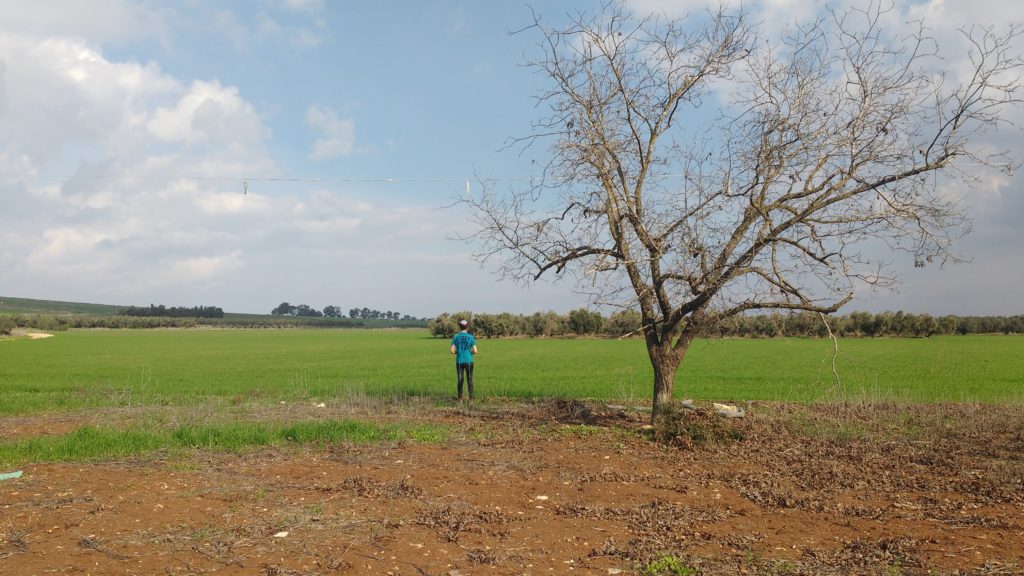Little boxes on the hillside,
Little boxes made of ticky tacky,
Little boxes on the hillside,
Little boxes all the same.
There’s a green one and a pink one
And a blue one and a yellow one,
And they’re all made out of ticky tacky
And they all look just the same.
I remember the moment when we decided to cancel our subscription to Mekor Rishon. MR is a popular newspaper geared towards the national-religious population in Israel, and was a virtual “right of passage” for new olim determined to practice their Hebrew (at least on the weekends) and be “in the know.”
We were sitting on the couch on a Friday night, each struggling with our chosen section, asking our kids how to translate just about every third word, when Ira announced, “That’s it, we’re done.” He hands me an ad printed in MR for a Joseph Kaufmann jacket with the tagline ג׳וסף קאפמן: המעיל הרשמי של המגזר״” (“Joseph Kaufmann: The Official Jacket of the [National-Religious] Sector”).


This was the final straw for Ira. “How can a migzar have an ‘official jacket?’”
His incredulity was a build-up of years living as a dati (religious) Jew, in a society where exhaustive introspection and analysis by different subgroups cause many to retreat to their corners in tightly defined and hotly defended “sectors.” Each sector has its own hashkafa (world outlook), its own schools, its own yeshivot, its own territory, its own haircovering, its own dress code, its own vacation spots, its own biases, and now apparently its own winter apparel.
We were at a crossroads, finding ourselves lost in the cramped discussions of skirt lengths, where was the proper place for a television set in the home (salon or bedroom?), hearing neighborhood teens described as “stronger” or “weaker” depending on their dress or kippah. Our local girls’ high school presents itself on parents’ night as philosophically “segurim”: closed, cut off from broader society, not geared towards students who might need or want to have difficult conversations about Judaism and halacha. And, of course, the inescapable “women’s issues”: should the girls have a shorter school day than the boys, because their involvement in Talmud Torah isn’t as rigorous? Can a shul allow for women to dance with a Sefer Torah on Simchat Torah? Must the mechitza have an opaque curtain from shoulder height-up, or is lace sufficient? Can a woman give a shiur to a mixed audience? Hours and hours of analysis, argument, discussion of confines, red lines, slippery slopes, tired tropes — there’s an artifice to all this talk, a self-importance we assign to our opinions, an emptiness to the endless dissections. We were suffocating under the narrowness of it all, feeling the heaviness of that Joseph Kaufmann jacket.
And the people in the houses
All went to the university,
Where they were put in boxes
And they came out all the same,
And there’s doctors and lawyers,
And business executives,
And they’re all made out of ticky tacky
And they all look just the same.
We cancelled our Mikor Rishon subscription and, along with it, any investment we had made till then of time and headspace devoted to making sure that our little box of ticky-tacky looked just the same as everyone else’s (nothing against MR — it’s a good paper, and a great way to practice your Hebrew, but the cancellation was just part of a general distancing from the whole concept of migzareyut [sectarianism].) We are working hard to break away from defining our relationship to HaKadosh Baruch Hu through social expectations and conventions. Halacha, yes — the contract Ira and I have with the Divine is through our behavior as Jews who are trying to abide to the best of our ability by halacha. But since the contemporary obsession with “types” and “flavors” overwhelmingly manifests itself in externals, we are firmly “post-sectarian,” past caring about the labeling assigned to and by sectors; we are moving beyond the artificial divides that leave us so unsettled.
(Do you also grow weary, if you are a religious Jew, when contemplating our silly sentimentalities, the grave importance we randomly assign to certain markers which place us in one sector or another? Where’s the variety of experience? Why are we encouraging our kids to go into boxes, and come out all the same — hopefully wearing the Joseph Kaufmann jacket?)
https://www.youtube.com/watch?v=2_2lGkEU4Xs
Imagine, then, sitting across from the principal of the school that we’ll be sending some of our children to next year, when he offers, unbid: “It’s important to understand something about the north that’s very different from people’s experiences in the merkaz. I, too, moved from the center of the country — Bet Shemesh, specifically — to assume this position seven years ago, and discovered something marvelous about life up here. We are one large school here at Kibbutz Lavi, encompassing the whole swath of what it means to be dati in our day, and we’re not reluctant about that reality or in any way pushing a pluralistic agenda from an ideological perspective. To be dati in our region is just to be dati, whatever that means to each family. Everyone gives in a little bit, everyone bends, so that we can all naturally and easily be together as one. You’ll sense it here, once you move. There’s an openness: to the place, to the space, and to each other.”

Ira and I looked at each other then, smiles broadening on both of our faces, as we breathed out “yes, that’s what we’re hoping for.” We’ll continue to build our little box on the hillside, as we have these last two decades, but this time hopefully what we manage to nurture and produce will be far from the same.

